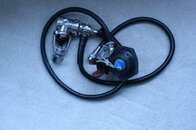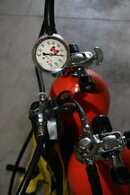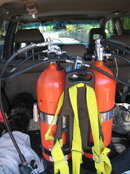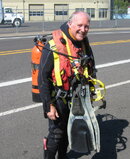Use one piston first stage, and one diaphragm, and adjust the diaphragm first stage to exactly the same IP as the piston. Then you will draw air equally from both cylinders.they don't draw equally. They will draw from the tank with the higher IP first. If they're close, it won't be all or nothing, but it will be biased towards the higher IP.
Switching every 500psi is excessive in the real world. They teach it during the courses to get the muscle memory down, but even with big steel tanks I usually go 500-600 for the first, then every 1000-1200psi after that. It's certainly not worth having one regulator tied to both tanks.
Which second stages allow for dual input? I've never heard of one before....
SeaRat









